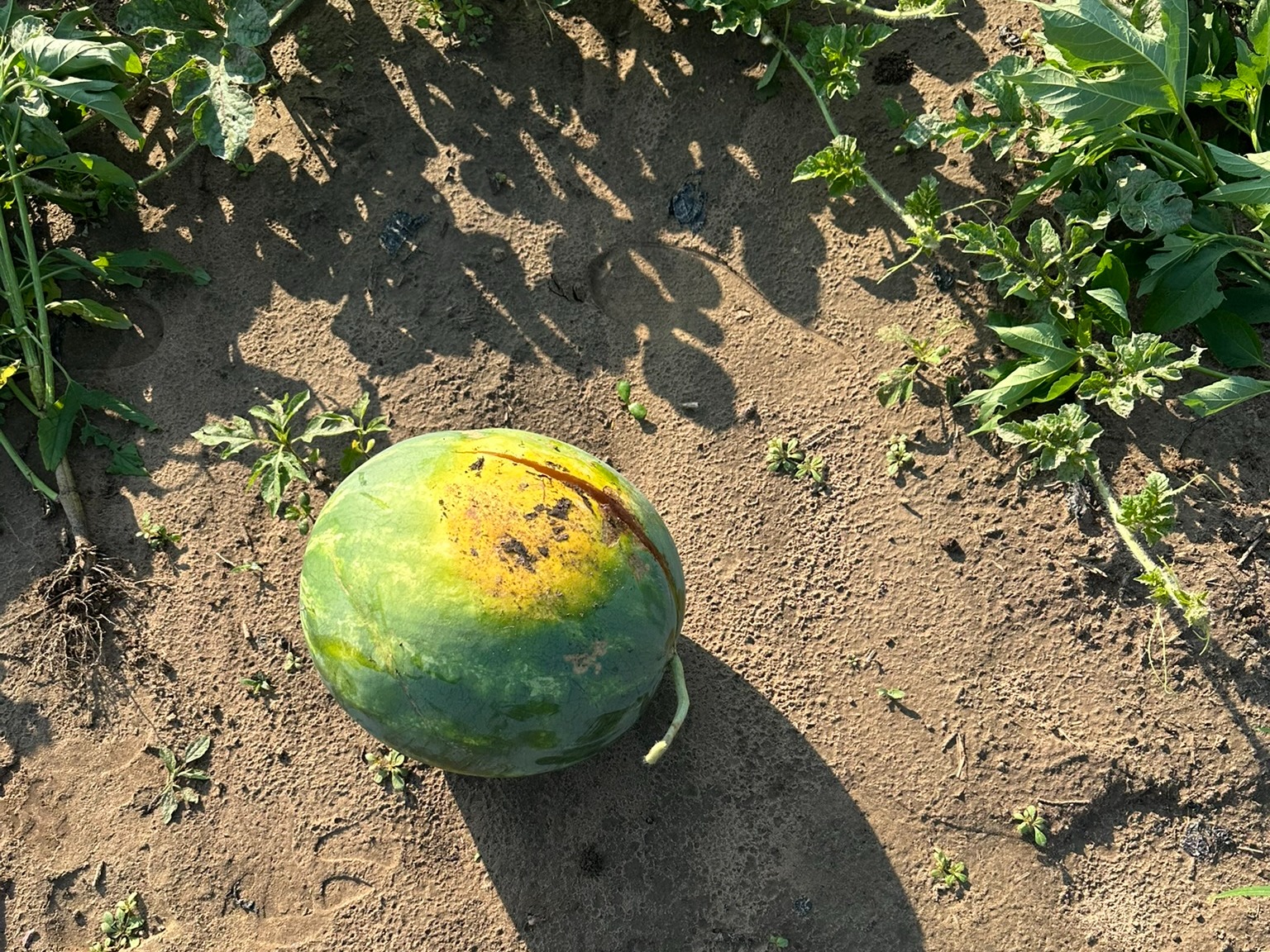Watermelon woes and pumpkin predictions: How rainy weather could affect seasonal favorites
Nothing hits the spot on a summer day like a sweet slice of watermelon. This year’s harvest has been good in Indiana, but June and July’s hot and wet weather has created some challenges to getting produce from fields to fridges. Purdue experts have identified four rain-related diseases and deformities that might affect watermelons — and possibly pumpkins.
Identifying diseases of concern
César Escalante, clinical assistant professor of vegetable pathology for botany and plant pathology, has traveled to fields across the state to address farmers’ disease concerns for watermelons and related crops. This year, anthracnose and Alternaria leaf blight pose the biggest threats.
Anthracnose is a fungal infection that starts as little black dots on the leaves before spreading. “It can cause these brown, water-soaked lesions on the fruits,” Escalante explained. “Then the lesions can become a pinkish color because of the millions of spores that are produced there.”
Wet weather spreads the disease quickly within a field since “the spores can be moved from one plant to another by a water splash,” Escalante said.
Often, the disease goes unnoticed since infected fruits can appear normal, with no visible lesions. If left untreated, the lesions can make the melons mushy and unmarketable after harvest. However, anthracnose can be treated with an appropriate fungicide, as detailed in the Midwest Vegetable Guide.
This year’s other major disease, Alternaria leaf blight, decreases yield through destroying leaves, which provide energy to grow the watermelons. Infected leaves will have many small spots with distinctive, concentric rings. Escalante says this disease is commonly confused with downy mildew.
Two other major issues late in the watermelon season are gummy stem blight and Phytophthora. Systemic fungicides are recommended for the management of these diseases; however, some fungicides might not be effective for Phytophthora as this pathogen is not a true fungus and is more closely related to algae.
“It’s important to do a good diagnosis,” Escalante said. “People can contact either me or the Purdue University Plant and Pest Diagnostic Lab.”
Investigating causes of deformities
Not every problem with watermelons is disease related. Wenjing Guan, an Extension specialist and clinical and engagement associate professor of horticulture and landscape architecture, explained that heavy rainfall can lead to uneven ripening and physiological disorders.
One disorder is fruit cracking, which often appears as radial splits extending from the stem end or splits at the blossom end. Additionally, hollow heart, characterized by a triangular-shaped hole in the middle of the fruit, has been observed in some fields and may be linked to inadequate pollination.
“Because we have all this rain, the pollination process could be negatively affected,” Guan explained.
 Cracking in watermelons can appear as radial splits extending from the stem end or splits at the blossom end.
Cracking in watermelons can appear as radial splits extending from the stem end or splits at the blossom end.  Hollow heart can appear as a small space inside the fruit.
Hollow heart can appear as a small space inside the fruit. ![Watermelon with a large, triangular gap inside and an overall triangular shape.]](_media/watermelon-woes_severe-hollow-heart.jpg) Hollow heart can also be more severe and even lead to the fruit having a distorted shape.
Hollow heart can also be more severe and even lead to the fruit having a distorted shape. These deformities may be avoided by selecting certain varieties over others, which Guan is currently researching at the Southwest Purdue Ag Center. She provides regular updates about her findings in the Vegetable Crops Hotline newsletter.
Predicting problems with pumpkins
Pumpkins, a close relative of watermelons, are just starting to grow on the vine. Even though it’s still early in the season, Escalante has some predictions for what problems might pop up and affect this year’s yield.
"I think one problem that growers have to pay attention to is bacterial spot because it affects the quality of the fruit,” Escalante said. “Another problem that we need to pay attention to is phytophthora, especially right now. Rain, a lot of humidity and high temperatures make a suitable environment for this pathogen to grow.”
For those wanting to learn more about the latest pumpkin research, Extension will be hosting a Pumpkin Field Day on Sept. 17 at the Southwest Purdue Ag Center. More information about the free event can be found here.
